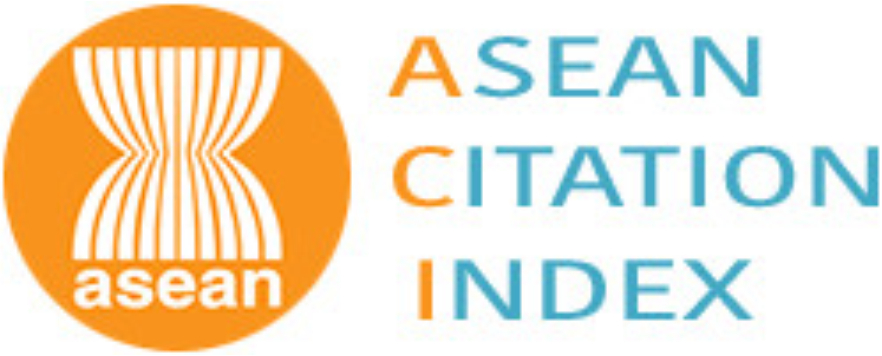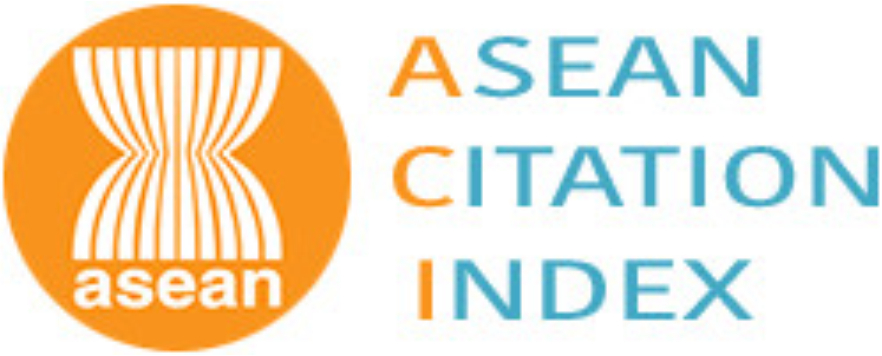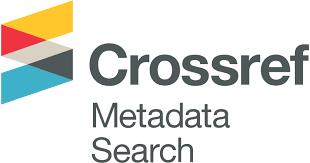Thực nghiệm xác định biến dạng dài hạn do co ngót của bê tông geopolymer với chất kết dính tro bay và xỉ lò cao
Email:
vuthquang85@gmail.com
Từ khóa:
Bê tông Geopolymer, tro bay, xỉ lò cao, co ngót. GPC
Tóm tắt
Bê tông Geopolymer (GPC) được xem là loại vật liệu thân thiện với môi trường, do giảm phát thải khí CO2, đã có nhiều nghiên cứu về cường độ, mô đun đàn hồi. Tuy nhiên để áp dụng rộng rãi vào thực tiễn cần có những nghiên cứu về biến dạng dài hạn theo thời gian của co ngót. Nội dung của nghiên cứu này trình bày thành phần cốt liệu của GPC với chất kết dính (CKD) tro bay và xỉ lò cao, quá trình thực nghiệm đo đạc biến dạng dài hạn do co ngót của GPC trong thời gian 6 tháng, xử lý số liệu và so sánh kết quả với biến dạng do co ngót của bê tông xi măng (OPC) được tính toán theo tiêu chuẩn AASHTO LRFD 2017 (TCVN 11823-5:2017) và nghiên cứu đã công bố. Kết quả nghiên cứu có thể xác định được biến dạng của co ngót theo thời gian, sử dụng để tính toán mất mát ứng suất trước do co ngót trong cáp dự ứng lực, phân bố lại ứng suất trong tiết diện dầm thép liên hợp với bản GPC, nội lực thứ cấpTài liệu tham khảo
[1]. Minh Hanh, Khánh Ly, COP28, Hội nghị toàn diện đầu tiên về tiến trình thực hiện Thoả thuận Paris, Cục biến đổi khí hậu - Bộ Tài nguyên và Môi trường, 2023. http://www.dcc.gov.vn/tin-tuc/3965/COP28:-Hoi-nghi-toan-dien-dau-tien-ve-tien-trinh-thuc-hien-Thoa-thuan-Paris.html, truy cập ngày 15 tháng 12 năm 2023
[2]. Xi măng Việt Nam, Thị trường xi măng - Sản lượng tiêu thụ xi măng kỳ vọng được phục hồi trong năm 2024 (2024). https://ximang.vn/bien-dong-thi-truong/thi-truong-xi-mang/san-luong-tieu-thu-xi-mang-ky-vong-duoc-phuc-hoi-trong-nam-2024-18999.htm, truy cập ngày 1 tháng 2 năm 2024.
[3]. J. Davidovits, Geopolymers, Journal of Thermal Analysis and Calorimetry, 37 (1991) 1633.
[4]. Phan Duy Thuận và các cộng sự, Nghiên cứu thực nghiệm ảnh hưởng của hàm lượng muối sulphate đến cường độ chịu nén của bê tông thường và bê tông Geopolymer, Tạp chí Xây dựng, 608 (2018) 73-77.
[5]. Jonh Day, James Aldred, Is Geopolymer concrete a suitable alternative to traditional concrete?, 37th Conference on Our World in Concrete & Structures, Singapore, (2012) 29-31, https://www.wagner.com.au/media/1517/jaldred_jday_geopolymer-concrete_singapore-2012.pdf, truy cập ngày 3/2/2024.
[6]. T. Bakharev, Thermal Behaviour of Geopolymers Prepared Using Class F Fly Ash and Elevated Temperature Curing, Cement and Concrete Research, 36 (2006) 1134-1147. https://doi.org/10.1016/j.cemconres.2006.03.022
[7]. T. Bakharev, Resistance of geopolymer materials to acid attack, Cement and Concrete Research, 35 (2005) 658-670.
[8]. Rangan, Djwantoro Hardjito, Development and properties of low-calcium fly ash-based geopolymer concrete, Faculty of Engineering Curtin University of Technology Perth, Australia, (2005).
[9]. B. V. Rangan, Geopolymer concrete for environmental protection, The Indian Concrete Journal, 88 (2014) 41-48, 50-59.
[10]. A. Mobili, A.B., C. Giosuè, T. Bellezze, F. Tittarelli, Metakaolin and fly ash alkaliactivated mortars compared with cementitious mortars at the same strength class, Cem. Concr. Res, 88 (2016) 198–210.
[11]. Y. Ma, G.Y., The shrinkage of alkali activated fly ash, Cement and Concrete Research, 68 (2015) 75–82. https://doi.org/10.1016/j.cemconres.2014.10.024
[12]. C. Cartwright, F. Rajabipour, Aleksandra Radlińska, Shrinkage Characteristics of Alkali-Activated Slag Cements, Journal of Materials in Civil Engineering, 27 (2014). https://doi.org/10.1061/(ASCE)MT.1943-5533.0001058
[13]. B.D. Kumarappa, S. Peethamparan, M. Ngami, Autogenous shrinkage of alkali activated slag mortars: Basic mechanisms and mitigation methods, Cement and Concrete Researchs, 109 (2018) 1–9. https://doi.org/10.1016/j.cemconres.2018.04.004
[14]. Siva Uppalapati, Shiju Joseph, Özlem Cizer, Autogenous shrinkage and strength development of alkali-activated slag/fly ash mortar blends, 5th International Slag Valorisation Sysposium, Belgium, (2017) 393–396.
[15]. G. Fang, W.T., Y. Zhu, M. Zhang, Autogenous shrinkage of alkali-activated fly ash-slag pastes with and without SAP, Proceedings of the 4th International Conference on Service Life Design for Infrastructures, (2018), 449–455. https://discovery.ucl.ac.uk/id/eprint/10060591/1/2018_SLD4.pdf
[16]. Chi Hou Un, Creep Behaviour of Geopolymer Concrete, Doctoral Thesis, Swinburne University of Technology, Melbourne, Australia, (2017).
[17]. Nguyễn Văn Dũng, Nghiên cứu chế tạo bê tông geopolymer từ tro bay, Tạp chí Khoa học và Công nghệ - Đại học Đà Nẵng, 5 (2014) 22-25.
[18]. Đào Văn Đông, Nghiên cứu một số tính chất cơ học của bê tông Polyme vô cơ, Tạp chí Cầu đường Việt Nam, 12 (2009) 22-26.
[19]. Đào Văn Đông, Nghiên cứu một số tính chất của vữa polyme vô cơ trong môi trường ăn mòn nước biển, Tạp chí Giao thông Vận tải, 6 (2011) 24-26.
[20]. Trần Việt Hưng, Đào Văn Đông, Nguyễn Ngọc Long, Nghiên cứu xác định khả năng dính bám với cốt thép của GPC tro bay, Tạp chí Giao thông vận tải, 6 (2017) 49-52.
[21]. Trần Việt Hưng, Phạm Duy Hữu, Nguyễn Ngọc Long, Đào Văn Đông, Mô hình quan hệ ứng suất biến dạng khi nén của GPC tro bay, Tạp chí Giao thông vận tải, 5 (2017).
[22]. Lê Bá Danh, Phạm Duy Hoà, Nguyễn Bình Hà, Cao Bắc Đăng, Nghiên cứu ứng dụng bê tông Geopolymer cho kết cấu dầm dự ứng lực công trình cầu hướng tới phát triển bền vững, Tạp chí Xây dựng, 10 (2021) 148-152.
[23]. Nguyễn Bình Hà, Nguyễn Quốc Bảo, Vũ Thành Quang, Nghiên cứu ứng dụng bêtông geopolymer cho cầu dầm liên tục bêtông cốt thép dự ứng lực, Tạp chí Khoa học Công nghệ Xây dựng, 17 (2023) 32-41.
[24]. Trần Việt Hưng, Nghiên cứu thảnh phần, đặc tính cơ lý của bê tông Geopolymer tro bay và các ứng dụng cho kết cấu Cầu Hầm, Luận án tiến sỹ, Trường Đại học Giao thông Vận tải, 2017.
[25]. Phạm Quang Đạo, Nghiên cứu sự làm việc của dầm bê tông cốt thép sử dụng tro bay và xỉ lò cao làm chất kết dính geopolymer, Luận án tiến sỹ, Trường Đại học Xây dựng Hà Nội, 2021.
[26]. TCVN 5574 : 2018, Tiêu chuẩn thiết kế kết cấu bê tông và bê tông cốt thép, Tiêu chuẩn Quốc gia, Bộ Khoa học và Công nghệ, (2018).
[27]. ASTM C157/C157M-17, Standard Test Method for Length Change of Hardened Hydraulic-Cement Mortar and Concrete, American Society for Testing and Materials, 2017.
[28]. TCVN 3117: 2022, Bê tông - Phương pháp xác định độ co, Tiêu chuẩn Quốc gia, Bộ Khoa học và Công nghệ, xuất bản lần 3, 2022.
[29]. AASHTO, AASHTO LRFD Bridge Design Specifications. Section 5: Concrete Structures. 2017, Washington, DC: American Association of State Highway and Transportation Officials, 2017.
[2]. Xi măng Việt Nam, Thị trường xi măng - Sản lượng tiêu thụ xi măng kỳ vọng được phục hồi trong năm 2024 (2024). https://ximang.vn/bien-dong-thi-truong/thi-truong-xi-mang/san-luong-tieu-thu-xi-mang-ky-vong-duoc-phuc-hoi-trong-nam-2024-18999.htm, truy cập ngày 1 tháng 2 năm 2024.
[3]. J. Davidovits, Geopolymers, Journal of Thermal Analysis and Calorimetry, 37 (1991) 1633.
[4]. Phan Duy Thuận và các cộng sự, Nghiên cứu thực nghiệm ảnh hưởng của hàm lượng muối sulphate đến cường độ chịu nén của bê tông thường và bê tông Geopolymer, Tạp chí Xây dựng, 608 (2018) 73-77.
[5]. Jonh Day, James Aldred, Is Geopolymer concrete a suitable alternative to traditional concrete?, 37th Conference on Our World in Concrete & Structures, Singapore, (2012) 29-31, https://www.wagner.com.au/media/1517/jaldred_jday_geopolymer-concrete_singapore-2012.pdf, truy cập ngày 3/2/2024.
[6]. T. Bakharev, Thermal Behaviour of Geopolymers Prepared Using Class F Fly Ash and Elevated Temperature Curing, Cement and Concrete Research, 36 (2006) 1134-1147. https://doi.org/10.1016/j.cemconres.2006.03.022
[7]. T. Bakharev, Resistance of geopolymer materials to acid attack, Cement and Concrete Research, 35 (2005) 658-670.
[8]. Rangan, Djwantoro Hardjito, Development and properties of low-calcium fly ash-based geopolymer concrete, Faculty of Engineering Curtin University of Technology Perth, Australia, (2005).
[9]. B. V. Rangan, Geopolymer concrete for environmental protection, The Indian Concrete Journal, 88 (2014) 41-48, 50-59.
[10]. A. Mobili, A.B., C. Giosuè, T. Bellezze, F. Tittarelli, Metakaolin and fly ash alkaliactivated mortars compared with cementitious mortars at the same strength class, Cem. Concr. Res, 88 (2016) 198–210.
[11]. Y. Ma, G.Y., The shrinkage of alkali activated fly ash, Cement and Concrete Research, 68 (2015) 75–82. https://doi.org/10.1016/j.cemconres.2014.10.024
[12]. C. Cartwright, F. Rajabipour, Aleksandra Radlińska, Shrinkage Characteristics of Alkali-Activated Slag Cements, Journal of Materials in Civil Engineering, 27 (2014). https://doi.org/10.1061/(ASCE)MT.1943-5533.0001058
[13]. B.D. Kumarappa, S. Peethamparan, M. Ngami, Autogenous shrinkage of alkali activated slag mortars: Basic mechanisms and mitigation methods, Cement and Concrete Researchs, 109 (2018) 1–9. https://doi.org/10.1016/j.cemconres.2018.04.004
[14]. Siva Uppalapati, Shiju Joseph, Özlem Cizer, Autogenous shrinkage and strength development of alkali-activated slag/fly ash mortar blends, 5th International Slag Valorisation Sysposium, Belgium, (2017) 393–396.
[15]. G. Fang, W.T., Y. Zhu, M. Zhang, Autogenous shrinkage of alkali-activated fly ash-slag pastes with and without SAP, Proceedings of the 4th International Conference on Service Life Design for Infrastructures, (2018), 449–455. https://discovery.ucl.ac.uk/id/eprint/10060591/1/2018_SLD4.pdf
[16]. Chi Hou Un, Creep Behaviour of Geopolymer Concrete, Doctoral Thesis, Swinburne University of Technology, Melbourne, Australia, (2017).
[17]. Nguyễn Văn Dũng, Nghiên cứu chế tạo bê tông geopolymer từ tro bay, Tạp chí Khoa học và Công nghệ - Đại học Đà Nẵng, 5 (2014) 22-25.
[18]. Đào Văn Đông, Nghiên cứu một số tính chất cơ học của bê tông Polyme vô cơ, Tạp chí Cầu đường Việt Nam, 12 (2009) 22-26.
[19]. Đào Văn Đông, Nghiên cứu một số tính chất của vữa polyme vô cơ trong môi trường ăn mòn nước biển, Tạp chí Giao thông Vận tải, 6 (2011) 24-26.
[20]. Trần Việt Hưng, Đào Văn Đông, Nguyễn Ngọc Long, Nghiên cứu xác định khả năng dính bám với cốt thép của GPC tro bay, Tạp chí Giao thông vận tải, 6 (2017) 49-52.
[21]. Trần Việt Hưng, Phạm Duy Hữu, Nguyễn Ngọc Long, Đào Văn Đông, Mô hình quan hệ ứng suất biến dạng khi nén của GPC tro bay, Tạp chí Giao thông vận tải, 5 (2017).
[22]. Lê Bá Danh, Phạm Duy Hoà, Nguyễn Bình Hà, Cao Bắc Đăng, Nghiên cứu ứng dụng bê tông Geopolymer cho kết cấu dầm dự ứng lực công trình cầu hướng tới phát triển bền vững, Tạp chí Xây dựng, 10 (2021) 148-152.
[23]. Nguyễn Bình Hà, Nguyễn Quốc Bảo, Vũ Thành Quang, Nghiên cứu ứng dụng bêtông geopolymer cho cầu dầm liên tục bêtông cốt thép dự ứng lực, Tạp chí Khoa học Công nghệ Xây dựng, 17 (2023) 32-41.
[24]. Trần Việt Hưng, Nghiên cứu thảnh phần, đặc tính cơ lý của bê tông Geopolymer tro bay và các ứng dụng cho kết cấu Cầu Hầm, Luận án tiến sỹ, Trường Đại học Giao thông Vận tải, 2017.
[25]. Phạm Quang Đạo, Nghiên cứu sự làm việc của dầm bê tông cốt thép sử dụng tro bay và xỉ lò cao làm chất kết dính geopolymer, Luận án tiến sỹ, Trường Đại học Xây dựng Hà Nội, 2021.
[26]. TCVN 5574 : 2018, Tiêu chuẩn thiết kế kết cấu bê tông và bê tông cốt thép, Tiêu chuẩn Quốc gia, Bộ Khoa học và Công nghệ, (2018).
[27]. ASTM C157/C157M-17, Standard Test Method for Length Change of Hardened Hydraulic-Cement Mortar and Concrete, American Society for Testing and Materials, 2017.
[28]. TCVN 3117: 2022, Bê tông - Phương pháp xác định độ co, Tiêu chuẩn Quốc gia, Bộ Khoa học và Công nghệ, xuất bản lần 3, 2022.
[29]. AASHTO, AASHTO LRFD Bridge Design Specifications. Section 5: Concrete Structures. 2017, Washington, DC: American Association of State Highway and Transportation Officials, 2017.
Tải xuống
Chưa có dữ liệu thống kê

Nhận bài
25/03/2024
Nhận bài sửa
20/05/2024
Chấp nhận đăng
28/05/2024
Xuất bản
15/06/2024
Chuyên mục
Công trình khoa học
Kiểu trích dẫn
Nguyễn Bình, H., Vũ Thành, Q., Lê Bá, D., & Nguyễn Văn, Q. (4400). Thực nghiệm xác định biến dạng dài hạn do co ngót của bê tông geopolymer với chất kết dính tro bay và xỉ lò cao. Tạp Chí Khoa Học Giao Thông Vận Tải, 75(5), 1763-1774. https://doi.org/10.47869/tcsj.75.5.5
Số lần xem tóm tắt
286
Số lần xem bài báo
193









